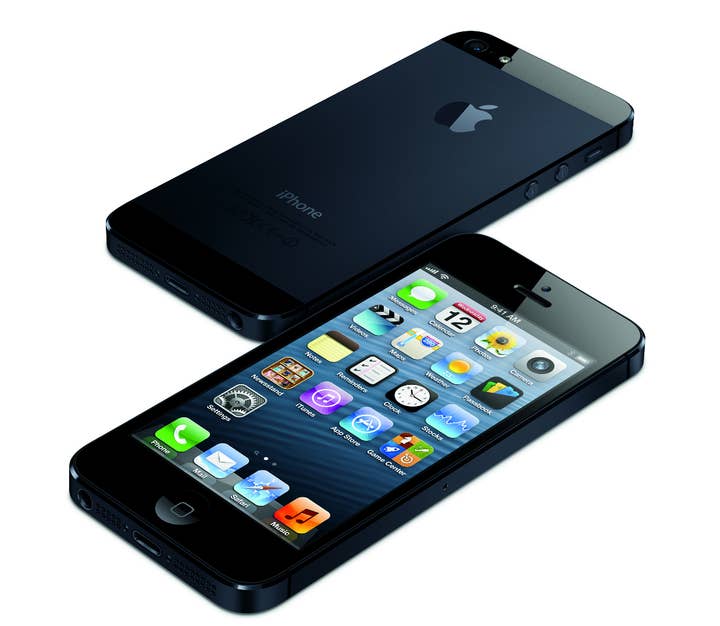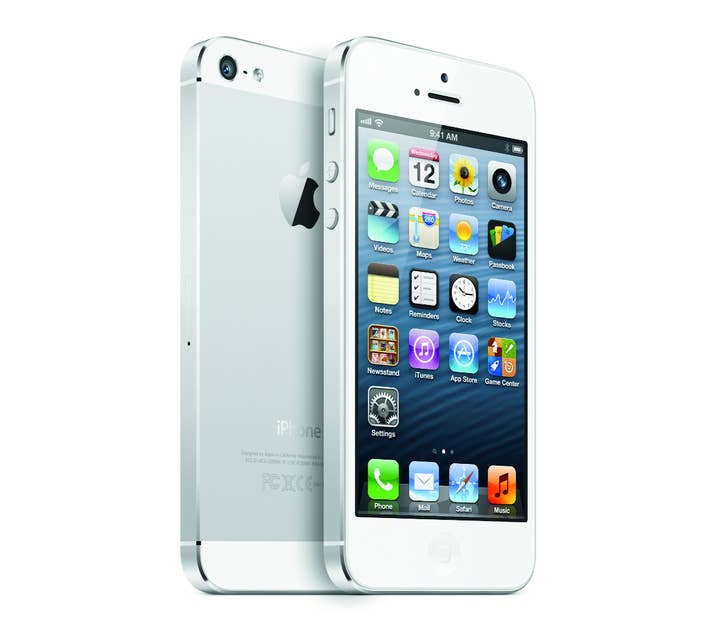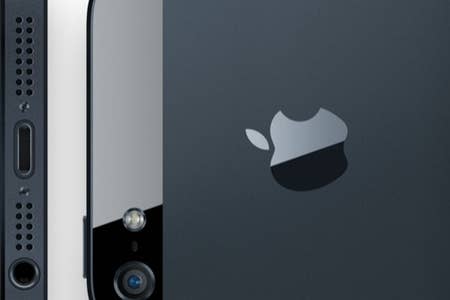Critical Consensus: iPhone 5
Taller, thinner and lighter, Apple's latest phone is a masterclass in design with a potentially disastrous adapter
Some products don't need reviews. The Dark Knight Rises could have been mauled by the critics without any noticeable damage to its opening weekend. Call of Duty: Black Ops will sell millions in a very short space of time irrespective of whether its average rating is in the upper reaches of the ten-point scale. And within 24 hours of opening pre-orders for the iPhone 5, a full day before the first reviews went live, Apple announced that it had already secured two million sales. Frankly, it could have reached half that figure without releasing a single piece of information.
Perhaps this explains the odd sense of resignation that permeates many reviews of the iPhone 5: yet more high praise for yet another great device from a company with such incredible momentum it's hard to see how it could ever be toppled or surpassed. All agree that the iPhone 5 lacks the headline features of previous iterations, but all agree that it will be a market leader in both quality and penetration.
"This is a hallmark of design. This is the one you've been waiting for"
Tim Stevens, Engadget
In terms of hardware, discussion of the iPhone 5 has largely focused on the screen, which retains the width of previous iterations while extending the length from 3.5 to 4-inches. The benefits of a large screen may seem self-evident, but The Wall Street Journal's Walt Mossberg argues that it distinguishes the device from super-sized competitors like the Samsung Galaxy S III.
"These competing big screens are typically both taller and wider," he admits, noting that anyone who likes them may not be happy with the iPhone 5's lack of width. "However, I found the new iPhone screen much easier to hold and manipulate than its larger rivals and preferred it. In my view, Apple's approach makes the phone far more comfortable to use, especially one-handed. It's easier to carry in a pocket or purse and more natural-looking when held up to your face for a call.
"And the moment you turn it on, you notice that the new, larger, screen can display more content: six rows of icons instead of five, and more contacts, emails and calendar entries without scrolling... The new model keeps the "Retina display" effect, which allows for sharp details. The screen continues to look great."

The new screen-size - along with a CPU with twice the graphics performance - will only make the iPhone a more attractive option for game developers, and any apps that don't make use of the space will suffer nothing more than being framed by a pair of slender and subtle black bars. However, while the iPhone 5's screen has received unanimous praise, its other major selling point - a thinner and lighter chassis - has a single caveat to balance the plaudits.
"Grasp the frame in your hand and the first thing you'll notice is the weight; it's the lightest iPhone ever," writes T3's Luke Peters of the device's 7.6mm, 112g anodised aluminium shell, which Apple claims is the thinnest on the market. Peters argues that the Huawei Ascend P1 S, Oppo Finder and ZTE Athena are all thinner, but, "when the depth is combined with the weight, it feels sufficiently waif-like in the hand.
"And we're not convinced that's for the good. Of course we want our mobile tech to be light and lithe, but what we've loved about previous iGenerations is the weighty, industrial feel, the security of feeling something solid in your pocket and knowing that, if it takes a knock, it's not going to shatter into a billion plastic pieces.
"Apple says that old connector, after 10 years, desperately needed an update. Still, Apple has just given away one of its greatest competitive advantages"
David Pogue, The New York Times
"Don't get us wrong, it's a miracle how Apple has shed so much excess podge and millions of people will love the lightweight design, but we preferred the more robust, weapon-like nature of the 4S."
An oddly personal note for a consumer smartphone review, but with so many bleeding-edge handsets on the market even relatively trivial matters can be amplified into deal-breaking significance. After all, change may be inevitable in the hyper-competitive world of mobile phones, but it can be motivated more by necessity than inspiration.
At any rate, Engadget's Tim Stevens would likely disagree with T3's quibble, proclaiming the iPhone 5 the best iteration of the device to date. "This is a hallmark of design," Stevens writes. "This is the one you've been waiting for."
"Two times faster? Twice the graphics performance? Better battery life? Actually, yes. The iPhone 5 over-delivers on all those promises. Running the Geekbench test suite on the iPhone 4S gave us an average score of 634; the iPhone 5 netted an average of 1,628. That's more than twice as fast and, while you won't necessarily see such huge increases in day-to-day usage, apps load noticeably quicker, HDR images are processed in half the time, and tasks like video rendering in iMovie are equally expedient.

"There's an important question that's left: what kind of battery life can you expect? Power is nothing without longevity and, shockingly, the iPhone 5 copes amazingly well. In a day of heavy usage with LTE, GPS and WiFi all enabled, we managed 14 hours and 18 minutes before the phone succumbed to."
Where Apple has potentially hit a wall is in the software: iOS 6, Stevens argues, is tighter and more refined in a number of ways, but it lags behind the obvious steps forward taken with the hardware. Indeed, Stevens claims that it iOS is, "beginning to feel a bit dated and beginning to show its age," while the decision to abandon Google Maps in favour of Apple's own app is far from an unqualified success. It is fast and aesthetically pleasing, sure, but as it currently stands Apple's decision amounts to depriving its customers of a superior service.
"It isn't nearly as comprehensive as Google's offerings on Android," Stevens writes. "The biggest drawback is the unfortunate lack of public transportation directions. If you haven't quite mastered New York City's subway system, you won't get any help from your iPhone 5. Curiously, the app offers to give you public transportation directions, but should you choose that option it pops you straight into the App Store with a search for 'Routing Apps'. Right now, there are zero results."
Of course, the nature of the iOS ecosystem means that the problem will likely transition from 'no apps' to 'there's so many apps it's impossible to choose', but the iPhone 5's Maps function is one of the only aspects of the device to attract much criticism - and even then only in comparison to Google.
"It's a miracle how Apple has shed so much excess podge and millions of people will love the lightweight design, but we preferred the more robust nature of the 4S"
Luke Peters, T3
The most widely cited problem is Apple's new "Lightning" connector, which is allegedly faster (this is debated in a number of reviews) and sturdier, but requires iPhone 5 owners to purchase a $30 adapter to use their existing iPhone peripherals. In a largely positive review for The New York Times, in which David Pogue marvels that the iPhone has become, "so light, tall and flat it's well on its way to becoming a bookmark," he also ponders the advantage Apple may have willingly left behind.
Pogue identifies three factors that have been vital to the iPhone's success: design, superior components, and compatibility. The iPhone 5 has arguably raised its game on the first two, but with the Lightning connector it has, "handed its rivals the third one on a silver platter.
"The iPhone's ubiquity has led to a universe of accessories that fit it," he writes. "These days, that decade-old iPhone/iPad/iPod charging connector is everywhere: cars, clocks, speakers, docks, even medical devices. But the new iPhone won't fit any of them."
"It's much sturdier than the old jack, and much smaller. And there's no right side up - you can insert it either way. It clicks satisfyingly into place, yet you can remove it easily. It's the very model of a modern major connector.
"Well, great, but it doesn't fit any existing accessories, docks or chargers. Apple sells an adapter plug for $30 (or $40 with an eight-inch cable "tail"). If you have a few accessories, you could easily pay $150 in adapters for a $200 phone. That's not just a slap in the face to loyal customers - it's a jab in the eye.
"Apple says that a change was inevitable - that old connector, after 10 years, desperately needed an update. Still, Apple has just given away one of its greatest competitive advantages."

